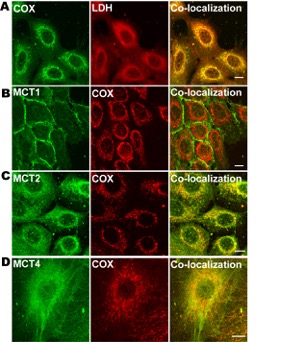
Professor
Email: gbrooks@berkeley.edu
Phone: (510) 642-2861
Lab Webpage: https://ib.berkeley.edu/labs/brooks
Research Description
Decades of research in the area of metabolic adjustments to exercise led to articulation of two working hypotheses: the "Lactate Shuttle," and the "Crossover Concept." Research on the Lactate Shuttle was to elucidate the pathways and controls of lactate formation and removal before, during and after exercise. That work involved studies on humans and animals, indirect calorimetry, isotope tracer technology, classic arterial-venous difference measurements, and muscle biopsies. As well, we sought to determine the factors that determine the expression of lactate transport proteins and their cellular domains. In recent years, generality of the Lactate Shuttle mechanism has impacted diverse fields such as neuro- and cancer cell biology. Most recently, from our collaboration with colleagues in Neurosurgery at UCLA we have made important discoveries on the fueling of body and brain following Traumatic Brain Injury (TBI). Hence, from a basic understanding of energy substrate utilization during physical activity we are now in position to improve standard of care, increase survival, and improve outcomes for people suffering brain and other forms of trauma. By virtue of significant research collaborations with other laboratories in the University of California and elsewhere, students, post-doctoral fellows, research staff, and visiting scientists the opportunity to work in important and exciting areas of science all with goal of improving the human condition.

Immunohistochemical detection of MCT, LDH isoforms,
and COx in control breast cell line HMEC 184. LDH isoforms,
MCT2, and MCT4 were colocalized with mitochondrial
protein marker COx (A, C, D), but MCT1 was not and was
localized mainly in the plasma membrane (B). **
Selected Publications
Glenn, T.C., N. A. Martin, D. A. Hovda, P. Vespa, M. L. Johnson, M. A. Horning, D. L. MacArthur, and G.A. Brooks. 2015. Endogenous nutritive support following traumatic brain injury: peripheral lactate production for glucose supply via gluconeogenesis. J Neurotrauma. 32: 811-819.
Glenn, T.C., N. A. Martin, D. A. Hovda, P. Vespa, M. A. Horning, D. L. MacArthur, and G.A. Brooks. 2015. Lactate: Brain Fuel following Traumatic Brain Injury. J Neurotrauma. 32: 820-382.
Brooks GA, Martin NA. 2015. Cerebral metabolism following traumatic brain injury: new discoveries with implications for treatment. Front Neurosci. Feb 9;8:408.
Messonnier, L.A., C.-A. W. Emhoff, M.A. Horning, J.A. Fattor, and G.A. Brooks. 2013. Lactate clearance capacity and the maximal lactate steady state. J Appl Physiol 114:1593-1602.
Dubouchaud, H., G.E. Butterfield, E.E. Wolfel, B.C. Bergman, and G.A. Brooks. 2000. Endurance training, expression and physiology of LDH, MCT1 and MCT4 in human skeletal muscle. Am. J. Physiol. 278:E571-579.
Brooks, G.A, H. Dubouchaud, M. Brown, J.P. Sicurello, and C.E. Butz. 1999. Role of mitochondrial lactic dehydrogenase and lactate oxidation in the 'intra-cellular lactate shuttle.' Proc. Natl. Acad. Sci. USA 96:1129-1134.
Friedlander, A.L., G.A. Casazza, M.A. Horning, and G.A. Brooks. 1999. Plasma free fatty acid rate of appearance is increased in men following endurance training. J. Appl. Physiol. 86:2097-2105.
Bergman, B.C., E.E. Wolfel, G.E. Butterfield, G. Lopaschuk, G.A. Casazza, M.A. Horning, and G.A. Brooks. 1999. Active muscle and whole body lactate kinetics after endurance training in men. J. Appl. Physiol. 87:1684-1696.
Brooks, G.A, M. A. Brown, C.E. Butz, J. P. Sicurello, and H. Dubouchaud. 1999. Cardiac and skeletal muscle mitochondria have a monocarboxylate transporter MCT1. J. Appl. Physiol. 87:1713-1718.
** Hussien, R. and G.A. Brooks. Mitochondrial and Plasma Membrane Lactate Transporter and Lactate Dehydrogenase Isoform Expression In Breast Cancer Cell Lines. Physiological Genomics. 43:255-264, 2011